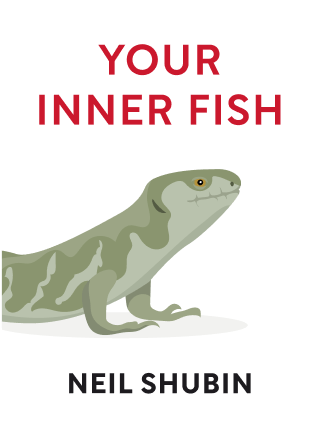

This article is an excerpt from the Shortform book guide to "Your Inner Fish" by Neil Shubin. Shortform has the world's best summaries and analyses of books you should be reading.
Like this article? Sign up for a free trial here .
What is the human sense of smell? How did it develop and why do we need it?
The human sense of smell is one of our core senses. Like all other parts of our bodies, the human sense of smell developed over time and can be traced back to our ancestors.
Read more about the human sense of smell and how it developed.
Developing The Human Sense of Smell
So how do humans smell? Humans, mammals, birds, reptiles, amphibians, and fish share the same basic system for detecting odors, which, like our other systems, has ancient origins. Drawing on both paleontology and DNA research, this chapter shows how we can trace our sense of smell to its start in primitive fish.
Humans can detect 5,000 to 10,000 different odors, as the brain responds to a host of molecules suspended in the air. Here’s how human smell works.
As we breathe, we pull odor molecules into the nose, where they’re trapped in the mucous lining in a patch of tissue with millions of nerve cells. The nerve cells bind to the air molecules and send signals to the brain, which identifies them as a smell. Each air molecule connects with a receptor in the nose that’s tuned to that type of molecule. A particular odor involves many different molecules and therefore many different receptors sending signals to the brain. An odor is like a chord made up of different notes with one combined sound. The brain reads combined receptor signals as one smell in the human smell.
In humans, mammals, birds, reptiles, amphibians, and fish, the human sense of smell is handled in the skull. We all have one or more nostrils for pulling in air molecules (or water molecules, in the case of fish), and then tissues where the air connects with neurons. There’s a basic pattern in the evolution of this system (nostrils, spaces, membrane) traceable from fish to humans, though it is a little different than the human smell.
Jawless fish such as lampreys and hagfish have a nostril that draws water molecules inside to a sac in the skull where smelling takes place (they have an external and an internal nostril). Other fish have a system more like ours where water instead of air travels from a nostril to a cavity connected with the mouth.
The Odor Genes
In addition to having nasal structures for pulling air molecules, we rely on genes to help identify odors.
In 1991, researchers identified a large family of genes that create the human sense of smell. They made three assumptions, which proved to be correct: that human genes for smell resemble the odor genes in mice, that the genes are active only in the tissues associated with smell, and that a large number of genes are involved with smelling.
They determined that 3% of the human genome is involved in detecting odors, which is a lot for one function. Each of these genes creates a receptor for an odor molecule. Other researchers found odor receptor genes in other species, which helped trace the transition in animals from sensing smell in water molecules to sensing it in air molecules. So what does this mean for the question “how do humans smell?”
Lampreys and hagfish have receptors that can handle both water and air molecules, indicating they emerged before the odor-detecting genes split into the two types, for water and air. These fish also have a fairly small number of odor genes.
The number of odor genes in animals increased over time (humans and mammals have over 1,000)—apparently, as animals became more complex, so did the sense of smell. The more odor genes an animal has, the greater its ability to detect different odors. Mammals (think tracking dogs) are extremely specialized smellers, including the human sense of smell.
But the additional odor genes in mammals seem to be modified copies of the small number in primitive fish. This means our odor genes are variations on a theme—arising from generations of duplication of the fish odor genes. But despite devoting a significant proportion of our genes to smelling, 300 of our odor genes have become useless due to mutations.
So now you know the answer to the question “how do humans smell?” and how it’s related to ocean ancestors.

———End of Preview———
Like what you just read? Read the rest of the world's best book summary and analysis of Neil Shubin's "Your Inner Fish" at Shortform .
Here's what you'll find in our full Your Inner Fish summary :
- How your hands and feet are like a fish that lived hundreds of millions of years ago
- How the structure of your head can be traced back to an ancient, headless worms
- What parts of your body are uniquely human






